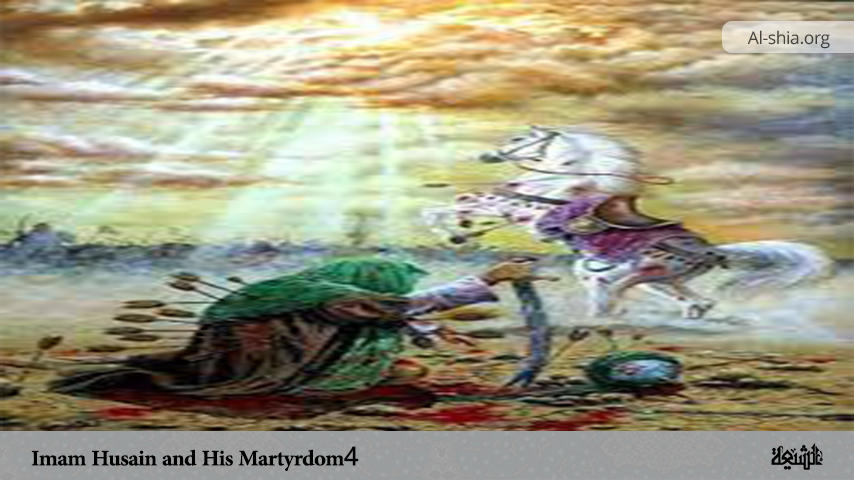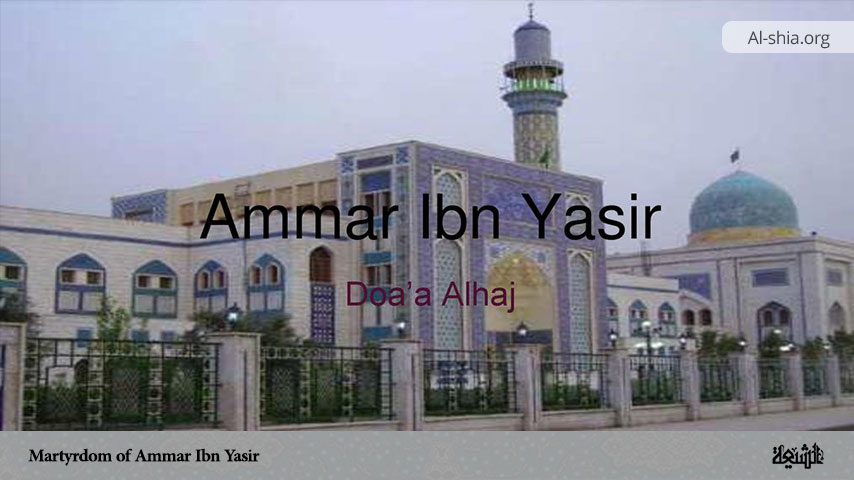In this part of the article titled “Imam Husain and his martyrdom”, we shall discuss some other relevant issues related to the martyrdom of Imam Husain (a.s).
Call to Surrender or Die
Presently messengers came from Kufa, and Imam Husain was asked to surrender. Imam Husain offered to take one of three alternatives. He wanted no political power and no revenge. He said “I came to defend my own people. If I am too late, give me the choice of three alternatives: either to return to Mecca; or to face Yazid himself at Damascus; or if my very presence is distasteful to him and you, I do not wish to cause more divisions among the Muslims. Let me at least go to a distant frontier, where, if fighting must be done, I will fight against the enemies of Islam.”
Every one of these alternatives was refused. What they wanted was to destroy his life, or better still, to get him to surrender, to surrender to the very forces against which he was protesting, to declare his adherence to those who were defying the law of God and man, and to tolerate all the abuses which were bringing the name of Islam into disgrace.
Of course, he did not surrender. But what was he to do? He had no army. He had reasons to suppose that many of his friends from distant parts would rally around him, and come and defend him with their swords and bodies. But time was necessary, and he was not going to gain time by feigned compliance. He turned a little round to the left, the way that would have led him to Yazid himself, at Damascus. He camped in the plain of Kerbela.
Water cut off; Inflexible will, Devotion and Chivalry
For ten days messages passed backwards and forwards between Kerbela and Kufa. Kufa wanted surrender and recognition. That was the one thing the Imam could not consent to. Every other alternative was refused by Kufa, under instructions from Damascus. Those fateful ten days were the first ten days of the month of Muharram, of the year 61 of the Hijra.
The final crisis was on the 10th day, the Ashura day, which we are commemorating. During the first seven days, various kinds of pressure were brought to bear on the Imam, but his will was inflexible. It was not a question of a fight, for there were but 70 men against 4,000. The little band was surrounded and insulted, but they held together so firmly that they could not be harmed.
On the 8th day, the water supply was cut off. The Euphrates and its abundant streams were within sight, but the way was barred. Prodigies of velour were performed in getting water. Challenges were made for single combat according to Arab custom. And the enemy was half-hearted, while the Imam’s men fought in contempt of death, and always accounted for more men than they lost. On the evening of the 9th day, the little son of the Imam was ill. He had a fever and was dying of thirst. They tried to get a drop of water.
But that was refused point blank and so they made the resolve that they would, rather than surrender, die to the last man in the cause for which they had come. Imam Husain offered to send away his people. He said, “They are after my person; my family and my people can go back.” But everyone refused to go. They said they would stand by him to the last, and they did. They were not cowards; they were soldiers born and bred; and they fought as heroes, with devotion and with chivalry.
The Final Agony; the placid face of the man of Allah
On the day of Ashura, the 10th day, Imam Husain’s own person was surrounded by his enemies. He was brave to the last. He was cruelly mutilated. His sacred head was cut off while in the act of prayer. A mad orgy of triumph was celebrated over his body. In this crisis, we have details of what took place hour by hour. He had 45 wounds from the enemies’ swords and javelins, and 35 arrows pierced his body.
His left arm was cut off, and a javelin pierced through his breast. After all that agony, when his head was lifted up on a spear, his face was the placid face of a man of God. All the men of that gallant band were exterminated and their bodies trampled underfoot by the horses. The only male survivor was a child, Husain’s son Ali, surnamed Zain-ul-‘Abidin – “The Glory of the Devout.” He lived in retirement, studying, interpreting, and teaching his father’s high spiritual principles for the rest of his life.
The heroism of the Women
There were women: for example, Zainab the sister of the Imam, Sakina his little daughter, and Shahrbanu, his wife, at Kerbela. A great deal of poetic literature has sprung up in Muslim languages, describing the touching scenes in which they figure. Even in their grief and their tears, they are heroic. They lament the tragedy in simple, loving, human terms.
But they are also conscious of the noble dignity of their nearness to a life of truth reaching its goal in the precious crown of martyrdom. One of the best-known poets of this kind is the Urdu poet Anis, who lived in Lucknow and died in 1874.
The lesson of the Tragedy
That briefly is the story. What is the lesson? There is of course the physical suffering in martyrdom, and all sorrow and suffering claim our sympathy, – the dearest, purest, most outflowing sympathy that we can give. But there is greater suffering than physical suffering. That is when a valiant soul seems to stand against the world; when the noblest motives are reviled and mocked; when truth seems to suffer an eclipse. It may even seem that the martyr has but to say a word of compliance, do a little deed of non-resistance; and much sorrow and suffering would be saved; and the insidious whisper comes: “Truth after all can never die.” That is perfectly true. Abstract truth can never die. It is independent of man’s cognition.
But the whole battle is for man’s keeping hold of truth and righteousness. And that can only be done by the highest examples of man’s conduct – spiritual striving and suffering enduring firmness of faith and purpose, patience and courage where ordinary mortals would give in or be cowed down, the sacrifice of ordinary motives to supreme truth in scorn of consequence.
The martyr bears witness, and the witness redeems what would otherwise be called failure. It so happened with Husain. For all were touched by the story of his martyrdom, and it gave the deathblow to the politics of Damascus and all it stood for. And Muharram has still the power to unite the different schools of thought in Islam and make a powerful appeal to non-Muslims also.
Explorers of Spiritual Territory
That, to my mind, is the supreme significance of martyrdom. All human history shows that the human spirit strives in many directions, deriving strength and sustenance from many sources. Our bodies, our physical powers, have developed or evolved from earlier forms, after many struggles and defeats. Our intellect has had its martyrs, and our great explorers have often gone forth with the martyrs’ spirit. All honour to them. But the highest honour must still lie with the great explorers of spiritual territory, those who faced fearful odds and refused to surrender to evil.
Rather than allow a stigma to attach to sacred things, they paid with their own lives the penalty of resistance. The first kind of resistance offered by the Imam was when he went from city to city, hunted about from place to place, but made no compromise with evil. Then was offered the choice of an effectual but dangerous attempt at clearing the house of God, or living at ease for himself by tacit abandonment of his striving friends. He chose the path of danger with duty and honour, and never swerved from it giving up his life freely and bravely. His story purifies our emotions. We can best honour his memory by allowing it to teach us courage and constancy.
The End
By: Abdullah Yusuf Ali (Renowned English translator and commentator of the Holy Qur’an), Progressive Islam Pamphlet No. 7, September, 1931.


















